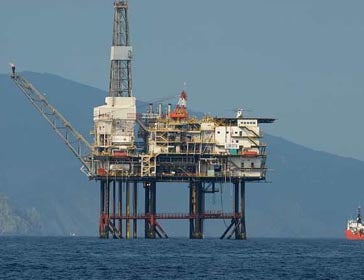Learn more: Global Warming Pollution Sources
 The largest source of carbon dioxide emissions globally is the combustion of fossil fuels such as coal, oil and gas in power plants, automobiles and industrial facilities. Carbon dioxide is the major driver of global warming. Although carbon dioxide is produced naturally by volcanoes, the decay of dead plant matter and natural forest fires, almost all of these sources of carbon dioxide are balanced by the Earth’s natural systems.
The largest source of carbon dioxide emissions globally is the combustion of fossil fuels such as coal, oil and gas in power plants, automobiles and industrial facilities. Carbon dioxide is the major driver of global warming. Although carbon dioxide is produced naturally by volcanoes, the decay of dead plant matter and natural forest fires, almost all of these sources of carbon dioxide are balanced by the Earth’s natural systems.
Growing plants and the oceans absorb and store carbon dioxide from the atmosphere so that it can not affect the global climate. It is the addition of billions of metric tons of carbon dioxide to the atmosphere each year, mainly from the burning of fossil fuels, that is overpowering these natural processes. This results in the continued buildup of carbon dioxide in the atmosphere and causes significant global changes to occur.
We are currently pumping over 30 billion metric tons of carbon dioxide into the atmosphere each year. The average person in the world today releases more than 11 kilograms (25 pounds) of carbon dioxide into the atmosphere each day. The average American emits almost five times this amount, producing about 55 kilograms (125 pounds) of carbon dioxide every day. If we do not make significant changes to the way we use and produce energy, global temperatures could increase by another 1.9 C to 3.9 C (3.5 F to 7 F) by the middle of this century. This may seem insignificant but this is the largest increase in temperature in the last 1000 years and it is occurring more rapidly than almost any other warming period in history.
This increase in global temperatures is likely to result in a series of catastrophic changes across the globe, including worse droughts, stronger hurricanes, the flooding of low-lying areas by rising sea levels, the extinction of many species and a major disruption in the global production of food.


